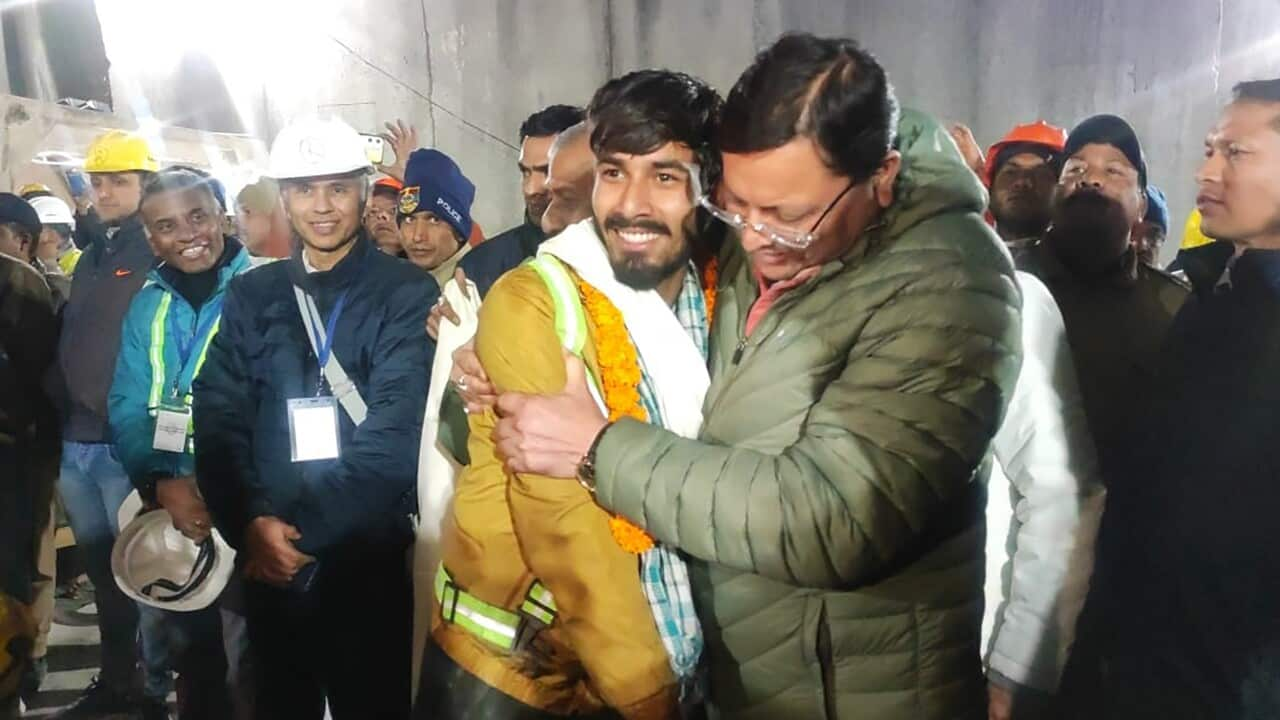Key Points
- The workers were pulled out on wheeled stretchers through a 90cm-wide steel pipe.
- Authorities have not said what caused the cave-in but the region is prone to landslides, earthquakes and floods.
- Local residents gathered outside the tunnel set off firecrackers and distributed sweets.
Rescuers have pulled out all 41 workers trapped for 17 days inside a collapsed tunnel in the Himalayas after drilling through the debris of rock, concrete and earth to reach them, triggering jubilation across India.
The evacuation of the men, low-wage workers from some of India's poorest states, began more than six hours after rescuers broke through the debris in the tunnel in Uttarakhand state, which caved in on 12 November.
They were pulled out on wheeled stretchers through a 90 cm wide steel pipe, with the entire process being completed in about an hour.
"Their condition is first-class and absolutely fine ... just like yours or mine. There is no tension about their health," said Wakil Hassan, a rescue team leader.

All 41 construction workers who were trapped in a collapsed mountain tunnel for more than two weeks were pulled out, bringing a happy end to a drawn-out rescue mission. Source: AAP / AP / Supplied
Some walked out smiling and were hugged by Dhami, while others made gestures of thanks with clasped hands or sought blessings by touching his feet. All were garlanded and also presented with a white fabric stole by Dhami and Singh.
"I want to say to the friends who were trapped in the tunnel that your courage and patience is inspiring everyone," Prime Minister Narendra Modi posted on social media platform X.
"It is a matter of great satisfaction that after a long wait these friends of ours will now meet their loved ones. The patience and courage that all these families have shown in this challenging time cannot be appreciated enough."
Ambulances that had lined up with lights flashing at the mouth of the tunnel transported the workers to a hospital about 30 km away. They are expected to travel to their home states after doctors clear them.
"We are happy and feel relieved. I have told everyone in the family that he has come out," said Rajni Tudu, whose husband Surendra was among the trapped men.
Local residents gathered outside the tunnel set off firecrackers, distributed sweets and shouted slogans hailing Mother India.

The efforts to reach the workers was one of the most significant and complicated rescue operations in India’s recent history. Source: AAP / AP / Supplied
Government agencies managing the crisis had on Monday turned to "rat miners" to drill through the rocks and gravel by hand from inside the evacuation pipe pushed through the debris after machinery failed.
The miners are experts at a primitive, hazardous and controversial method used mostly to get at coal deposits through narrow passages, and get their name because they resemble burrowing rats.
The miners, brought from central India, worked through Monday night and finally broke through the estimated 60-metres of rocks, earth and metal on Tuesday afternoon.
Authorities have not said what caused the cave-in but the region is prone to landslides, earthquakes and floods.
The tunnel did not have an emergency exit and was built through a geological fault, a member of a panel of experts investigating the disaster has told Reuters.
The Char Dham project has faced criticism from environmental experts and some work was halted after hundreds of houses were damaged by subsidence along the route.
The government has said it employed environmentally sound techniques to make geologically unstable stretches safer. It also ordered the National Highways Authority of India (NHAI) to audit 29 tunnels being built across India.









